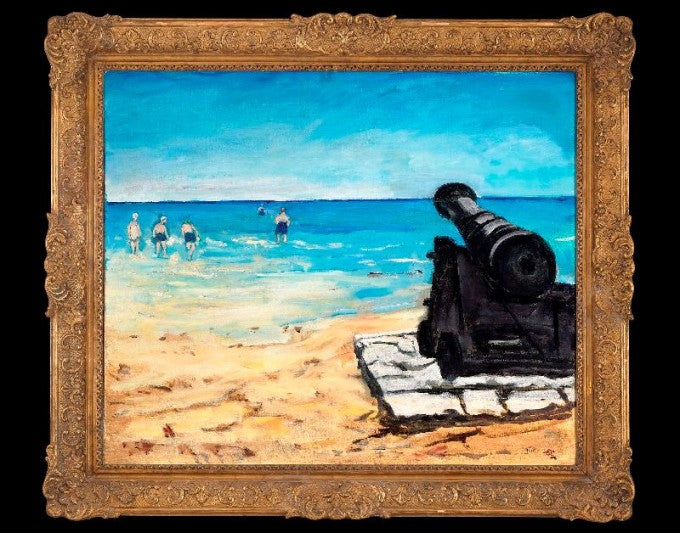
Few figures in Modern history evoke images of leadership, integrity and political prowess as does Winston Churchill. His iconic speeches and steadfast direction during World War II galvanized the Allied forces in Britain and abroad. Few people realized that, though he was most revered for his rolls as statesman, orator, historian, politician and writer, Churchill was also an accomplished artist.
M.S. Rau is honored to have two of his historically significant works currently in our Fine Art collection: The Tower of Katoubia Mosque, created and given by Churchill to President Franklin Delano Roosevelt in commemoration of their trip to Marrakech in 1943, and The Beach at Walmer, which the artist gifted to his close friend and military advisor, General Hastings Ismay. Those who were close to him confirm to the fact that Churchill loathed giving away any of his paintings, as he held a special connection with each and every work he created. He allowed a select few to leave his hands, only to his closest friends, making the availability of these works even more amazing.
Churchill pursued the art of painting for more than 40 years, becoming a dominating passion the last half of his life, and often his refuge from the stresses of the outside world. There is little evidence that he had any artistic training prior to his 40s. In fact, his wife Clementine mentioned at one point that before he began painting, Churchill had hardly visited an art museum, much less created art. Churchill first began painting following a personal and political disaster, the Dardanelles campaign, in 1915, with the encouragement of his sister- in-law, Goonie, herself a gifted watercolorist. From that moment on, he would never be far from a brush and canvas the remainder of his life.
By 1920, Churchill had gained enough confidence in his artistic abilities, through the encouragement of established artists such as Sir John Lavery and Paul Maze, to exhibit his works. In 1921, he sent several pieces to the Galerie Druet in Paris under the pseudonym "Charles Morin." Six of which sold. In 1925, he entered an amateur London painting competition with Winter Sunshine, Chartwell, winning first prize. His body of work remained intriguingly steadfast in both subject matter and style, displaying the obvious influence of the Post-Impressionists that flourished during this period. His color palette grew increasingly vivid, and he returned to the same subjects over and over, each time presenting a composition of distinctive emotional energy.
As Churchill's political reputation grew in the throws of World War II, so did his reputation as an artist. Shortly after the war's end, Sir Alfred Munnings, President of the Royal Academy, commissioned Churchill to submit two paintings to the Summer Exhibition. He did so under the name "Mr. Winter" to avoid bias. Both were unanimously accepted for display.
Churchill's legacy lives on in history as one of the founders of the free world. But perhaps his most overlooked achievement is the incredible artistic oeuvre that gives us a candid glimpse into the mind of one of the greatest men of our age.
Visit our fine art gallery and browse our collection of original paintings for sale.





